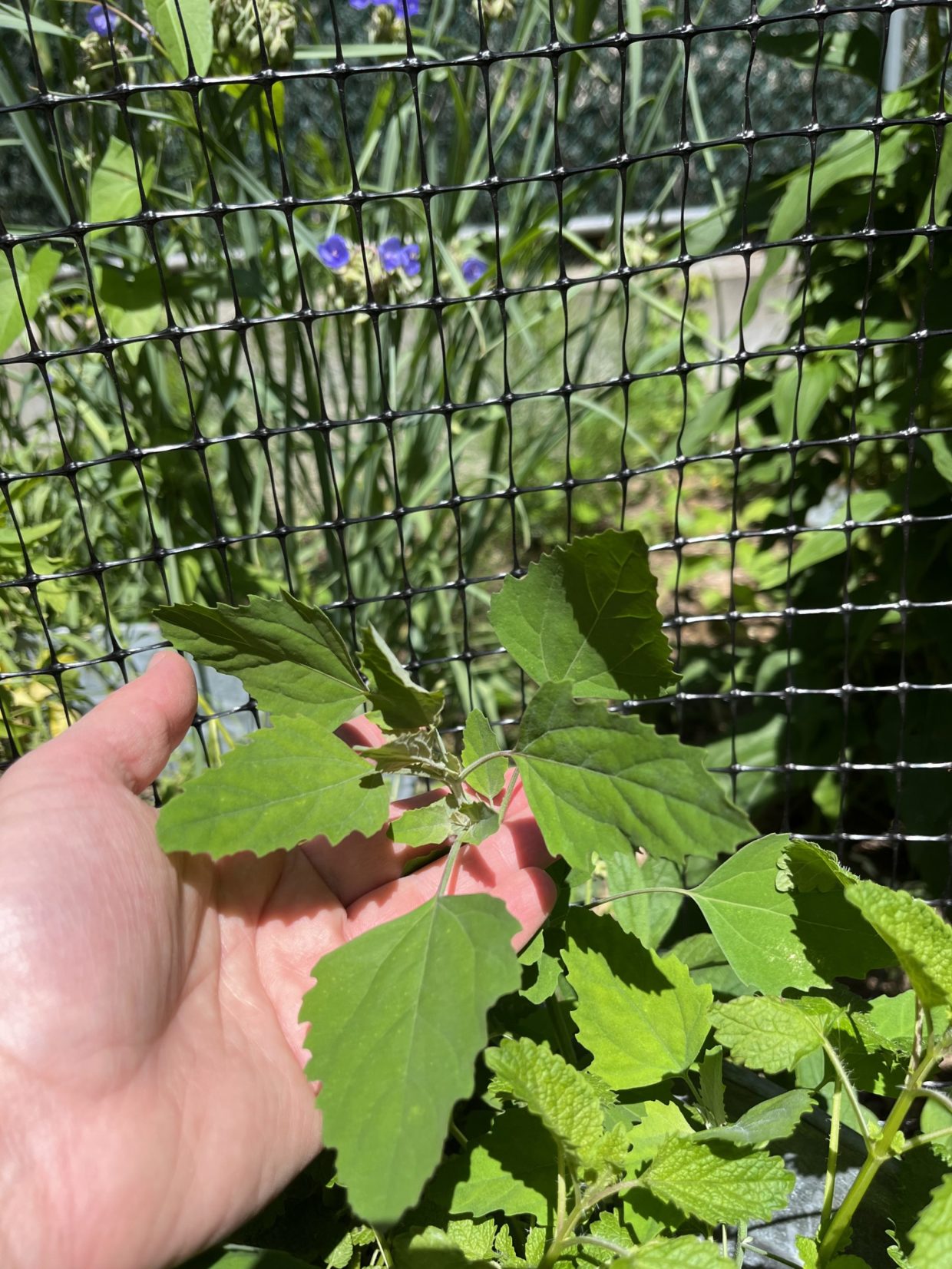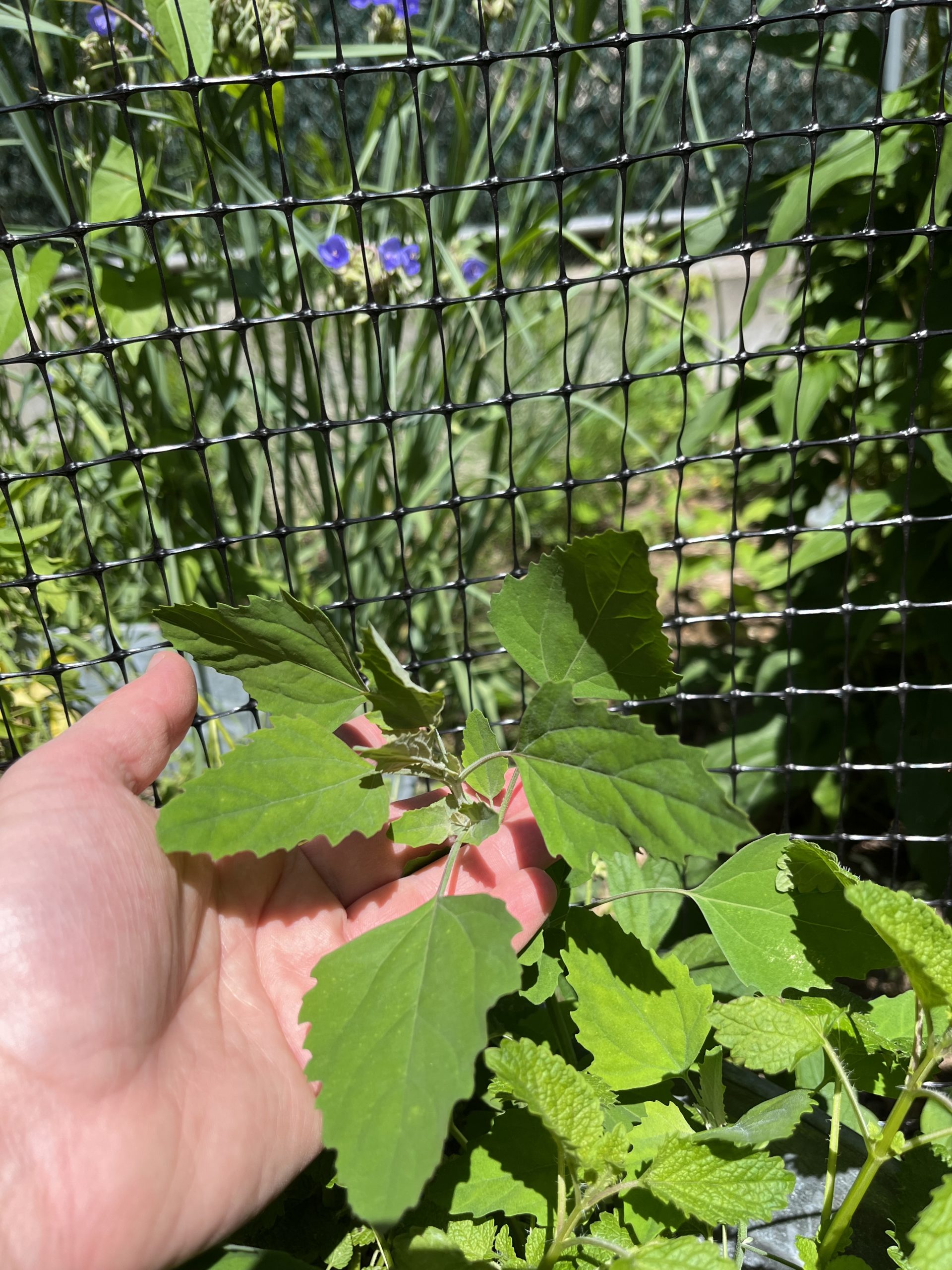Lamb’s Quarters: Gardener’s Foe, or Forager’s Friend?

What makes one plant “beneficial” and another a “weed?” Mint, for example, figures into many cuisines around the world; when muddled, it releases fragrant oils that brighten our summer teas and cocktails. It is even sold in small, adorable containers in local garden stores. Gardeners willfully plant it in their plots. And yet, mint rampantly usurps any ground it is planted in. Its horizontal, tentacular roots are stubbornly difficult to extract, and leach vital nutrients from the soil. Why do so few conceptualize mint as a “weed?” It is because mint has “value?” How is a plant’s value defined?
This question is not abstract. Each Garden Day, members of the Warren St. Marks Community Garden move through the paths and plots pulling unsightly nuisances, enterprising invaders, and tenacious stranglers, all of which seem to sprout overnight. Gout Weed, Bedstraw, Morning Glory, Burr Cucumber, and Japanese Knotweed, to name a few. Knotweed spreads rapidly and forms dense thickets that crowd native plants; and yet it is edible—especially when pulled early in the season. Some say it tastes like rhubarb, and online you can find recipes for how to pickle it—or even turn it into bread.
Which brings us to Lamb’s Quarters. Lamb’s Quarters grows abundantly (and rapidly) in the WSMCG. It is easy to pull as its roots sit close to the surface of the earth. It grows almost everywhere, especially in soils rich in nitrogen. But closely examining the “weed’s” properties makes one question is categorization—and our tendency to toss the plant on top of the compost heap.
Lamb’s Quarters is in the spinach family. It is grown as a crop in South Asia and parts of Europe. According to healthbenefitstimes.com, Lamb’s Quarters is “very high in important Vitamins, Calcium and phosphorus and is also good source of protein, trace minerals, B Vitamins, iron, and potassium.”[1] That means it carries numerous health benefits. Put another way, Lamb’s Quarters is actually a leafy vegetable. The facility with which it grows should be a boon to its reputation rather than a mark against it.
A quick search online reveals an abundance of Lambs Quarter’s recipes: creamy vegetarian gratin (https://www.epicurious.com/recipes/food/views/creamy-lambs-quarters-gratin-51238110); frittata (https://food52.com/recipes/29093-lambsquarters-frittata); cream of Lamb’ Quarters soup (https://www.pbs.org/food/kitchen-vignettes/cream-of-lambsquarter-soup/); and pesto (https://wildfoodgirl.com/2014/lambs-quarters-pesto-sunflower-seeds/). My sister has a simpler method: she briefly steams it for 2-3 minutes, tosses it in a drizzle of olive oil, and garnishes with a pinch of sea salt. Voila!
It’s time to rethink our relationship to this plucky, delicious, vitamin-rich plant. Perhaps the WSMCG could even hold an annual festival (the “Wilde Spinache Faire”?) to celebrate Lamb’s Quarters and all its misunderstood ilk—and to honor the bounty and resilience of the natural world.
[1] Lamb’s quarters – Chenopodium album, https://www.healthbenefitstimes.com/lambs-quarters/

